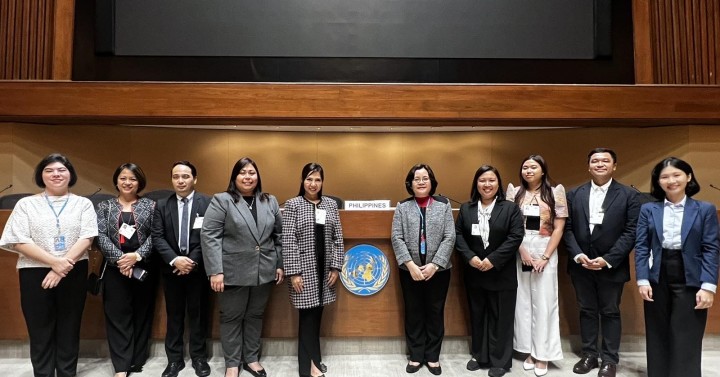The Minister for Home Affairs has recently unveiled the Australian Government’s new Migration Strategy, designed to revamp the country’s migration program.
Highlights
Unveiled on December 11, 2023, the latest Migration Strategy comprehensively tackles reforms within Australia’s migration program, giving specific attention to temporary skilled migration and the international education sector.
The Government’s Migration Strategy roadmap outlines eight key actions, meticulously crafted through widespread consultation and informed by insights from the Migration Review, Nixon Review, and 483 public submissions received.
Comprising 99 pages, the Strategy delves into existing commitments, areas set for implementation changes in 2024, and identifies zones for future reforms that will undergo consultation in 2024.
Temporary Skilled Shortage Visa
The government has introduced a new Skills in Demand visa to replace the existing Temporary Skills Shortage (subclass 482) visa. Key features of the new visa include:
- Time Period: The visa allows for a 4-year stay across all streams.
- Three Pathways: The visa is divided into three distinct pathways, detailed further below.
- Service Standards: The government commits to median processing times of 21 days.
- Increased Employee Mobility: Visa holders now have 180 days to secure a new sponsor if they cease employment, compared to the current 60-day period.
- Streamlined Labour Market Testing: The requirement for advertising positions through Workforce Australia has been removed, with an extension of advertisement validity from 4 to 6 months.
- Increased Pathways to Permanent Residency: All visa holders will have a route to permanent residency, with time spent under any approved employer counting towards eligibility.
- Potential Cost Reduction for Employers: The government is exploring the possibility of shifting employer fees to a monthly or quarterly model to alleviate upfront costs.
- Public Sponsor Register: A public register of approved sponsors will be established, providing information on the number of sponsored workers and their occupations to assist migrants seeking new sponsors.
The new Skills in Demand visa introduces three pathways for temporary skilled workers:
Tier 1 – Specialist Skills Pathway
- No Occupation Lists: All occupations are eligible, with the exception of trades workers, machinery operators and drivers, and labourers.
- Annual Earnings Requirement: Applicants must meet the new Specialist Skills Threshold, starting at $135,000 and subject to annual indexation.
- Fast Processing: The government guarantees a swift 7-day median visa processing time for this pathway.
Tier 2 – Core Skills Pathway
- Earnings Requirement: Applicants must have earnings of at least the Temporary Skilled Migration Income Threshold (TSMIT), currently set at $70,000, with annual indexation.
- Core Skills Occupation List: A simplified and regularly updated Core Skills Occupation List will be established. This list will include occupations identified by Jobs and Skills Australia as being in shortage or those agreed upon through international trade agreements.
Tier 3 – Essential Skills Pathway
The third pathway under the new Skills in Demand visa involves the government’s ongoing evaluation of developing a pathway for lower-paid workers under the Temporary Skilled Migration Income Threshold (TSMIT) but possessing essential skills. Many of these workers are currently sponsored under Labour Agreements.
The proposed arrangements for this pathway include being sector-specific, capped, incorporating stronger regulation and minimum standards, and being subject to further guidance from Jobs and Skills Australia and its tripartite mechanisms.
Permanent skilled migration
The Migration Strategy outlines future reforms to the permanent skilled migration program, although there is less clarity on these changes compared to the temporary skilled visa program.
Key future reforms include:
- Reforming the points test to identify migrants driving Australia’s long-term prosperity better.
- Allowing time spent with any approved employer to count towards permanent residence requirements.
- Providing Skills in Demand visa holders access to self-nominated independent permanent pathways, alongside employer-sponsored pathways.
- Considering a new Talent and Innovation visa to stimulate innovative investments and entrepreneurship.
The government plans to conduct additional consultations on the permanent skilled migration program in 2024.
International Students
New Genuine Student Test
The Migration Strategy introduces a new Genuine Skilling Requirement, which will replace the existing ‘Genuine Temporary Entrant’ requirement. Alongside this, the government aims to address the misuse of Australia’s student visa system and enhance requirements for international education providers to ensure robust standards.
Restrictions of onshore visa hopping for students and student providers
The government aims to curb onshore visa hopping, a practice that undermines the integrity of the system and perpetuates a state of ‘permanent temporariness.’ This measure seeks to address the issue of a growing population of individuals, mainly former international students, who have limited prospects of obtaining permanent residency while residing in Australia.
Increase English language requirements for international students
Starting in early 2024, the eligibility criteria for visas will see enhancements, including:
- IELTS 5.0 or equivalent for ELICOS student visa applicants
- IELTS 5.5 or equivalent for student visa applicants enrolled in foundation or pathway programs with recognized English language training
- IELTS 6.0 or equivalent for other student visa applicants
- IELTS 6.5 or equivalent for Temporary Graduate visa applicants
New age limit for Temporary Graduate visa applicants
Applicants for the Temporary Graduate visa will now need to be below the age of 35, a reduction from the existing age limit of 50.
Reducing the length of Temporary Graduate visas to:
The new changes to the Temporary Graduate visa include:
- Bachelor degree or Masters by coursework: 2 years
- Masters by research or PhD: 3 years
- Students in regional areas: eligibility for a second visa of 1-2 years, depending on the location
These modifications, along with other upcoming alterations to the points test and various skilled visa settings, aim to provide opportunities for graduates employed in skilled positions to pursue permanent residency.
Deepening people to people ties in the Indo-Pacific
Reformed PALM and PEV
Australia’s migration programs, particularly those involving the Pacific, underscore the nation’s unique relationship with its Pacific neighbors. The Pacific Australia Labour Mobility (PALM) scheme and the Pacific Engagement Visa (PEV) aim to support the economic goals of Pacific countries and Timor-Leste while enhancing interpersonal connections.
Extensive consultations with Pacific partners have been conducted to shape the design of the Pacific Engagement Visa (PEV), ensuring alignment with shared needs and priorities.
As part of the Australia-Tuvalu Falepili Union, Australia has committed to establishing a special visa arrangement facilitating Tuvaluans’ residence, study, and work in Australia. This initiative includes access to services promoting dignified mobility, with an initial allocation of 280 visas each program year.
Additionally, the government plans to explore further measures to facilitate travel to Australia for Southeast Asian business professionals, frequent travelers, and eminent individuals.
The overarching goal of these changes is to revamp and simplify Australia’s Migration System, with a focus on embedding simplification as a key objective within the Migration Strategy. The provided details offer only a condensed overview of the comprehensive strategy.



















+ There are no comments
Add yours